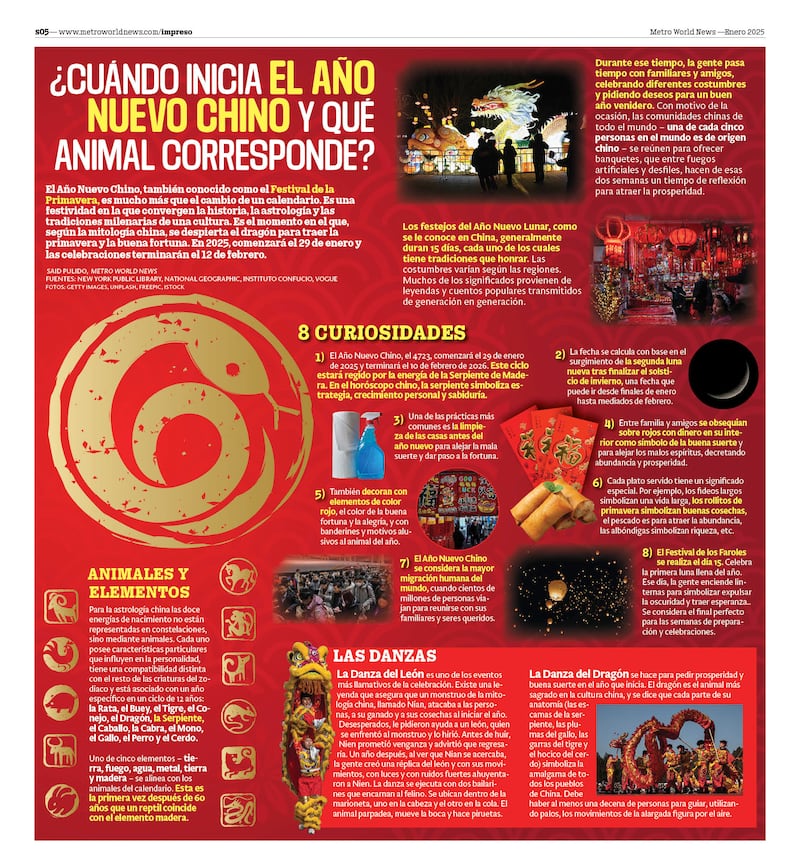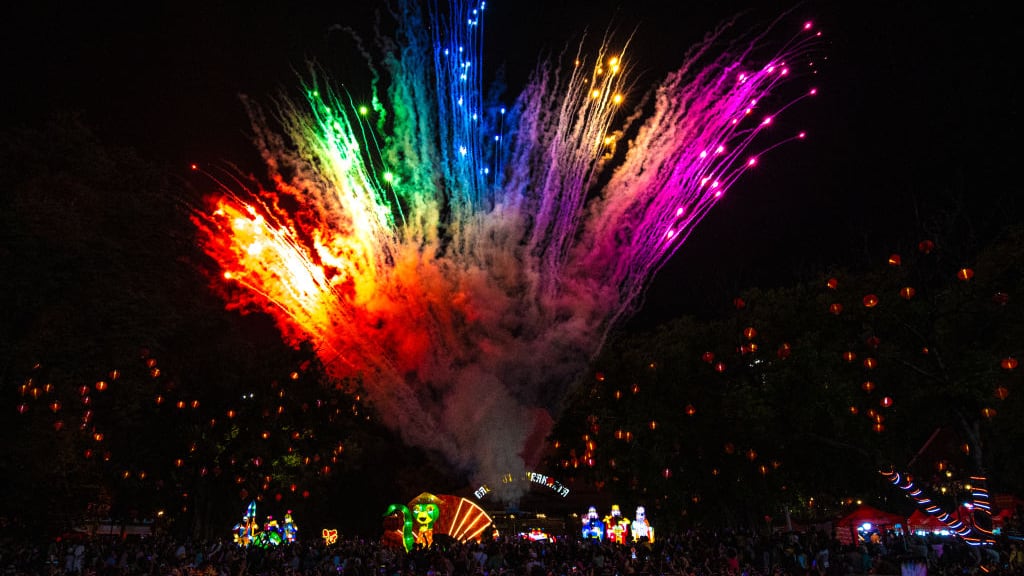The celebrations of the Lunar New Year, as it is known in China, generally last 15 days, each of which has traditions to honor. Customs vary by region. Many of the meanings come from legends and popular tales passed down from generation to generation.
PUBLICIDAD
During that time, people spend time with family and friends, celebrating different customs and making wishes for a good upcoming year. On this occasion, Chinese communities around the world – one in every five people in the world is of Chinese origin – come together to offer banquets, which, among fireworks and parades, make those two weeks a time of reflection to attract prosperity.
PUBLICIDAD

8 CURIOSITIES
• The Chinese New Year, 4723, will begin on January 29, 2025 and will end on February 10, 2026. This cycle will be ruled by the energy of the Wood Snake. In the Chinese horoscope, the snake symbolizes strategy, personal growth, and wisdom.
• The date is calculated based on the emergence of the second new moon after the winter solstice, a date that can range from late January to mid-February.
• One of the most common practices is the cleaning of houses before the new year to ward off bad luck and make way for fortune.
• Among family and friends, red envelopes with money inside are given as a symbol of good luck and to ward off evil spirits, decreeing abundance and prosperity.
• They also decorate with red elements, the color of good fortune and joy, and with banners and motifs alluding to the animal of the year.
• Each dish served has a special meaning. For example, long noodles symbolize a long life, spring rolls symbolize good harvests, fish is to attract abundance, meatballs symbolize wealth, etc.
• The Chinese New Year is considered the largest human migration in the world, when hundreds of millions of people travel to reunite with their family and loved ones.
• The Lantern Festival takes place on the 15th day. It celebrates the first full moon of the year. On that day, people light lanterns to symbolize driving out darkness and bringing hope. It is considered the perfect end to the weeks of preparation and celebrations.
ANIMALS AND ELEMENTS
In Chinese astrology, the twelve birth energies are not represented by constellations, but by animals. Each one has particular characteristics that influence personality, has different compatibility with the other zodiac creatures, and is associated with a specific year in a 12-year cycle: the Rat, the Ox, the Tiger, the Rabbit, the Dragon, the Snake, the Horse, the Goat, the Monkey, the Rooster, the Dog, and the Pig.
One of the five elements - earth, fire, water, metal, wood - aligns with the animals of the calendar. This is the first time in 60 years that a reptile coincides with the wood element.
THE DANCES
The Lion Dance is one of the most striking events of the celebration. There is a legend that claims that a monster from Chinese mythology, called Nian, would attack people, their livestock, and their crops at the beginning of the year. Desperate, they asked a lion for help, who confronted the monster and wounded it. Before fleeing, Nian promised revenge and warned that he would return. A year later, upon seeing Nian approaching, people created a replica of the lion and with its movements, lights, and loud noises they scared Nian away. The dance is performed by two dancers embodying the feline. They are positioned inside the puppet, one in the head and the other in the tail. The animal blinks, moves its mouth, and performs acrobatics.
The Dragon Dance is performed to ask for prosperity and good luck in the upcoming year. The dragon is the most sacred animal in Chinese culture, and it is said that each part of its anatomy (snake scales, rooster feathers, tiger claws, and pig snout) symbolizes the amalgamation of all the peoples of China. At least a dozen people are needed to guide, using sticks, the movements of the elongated figure through the air.
